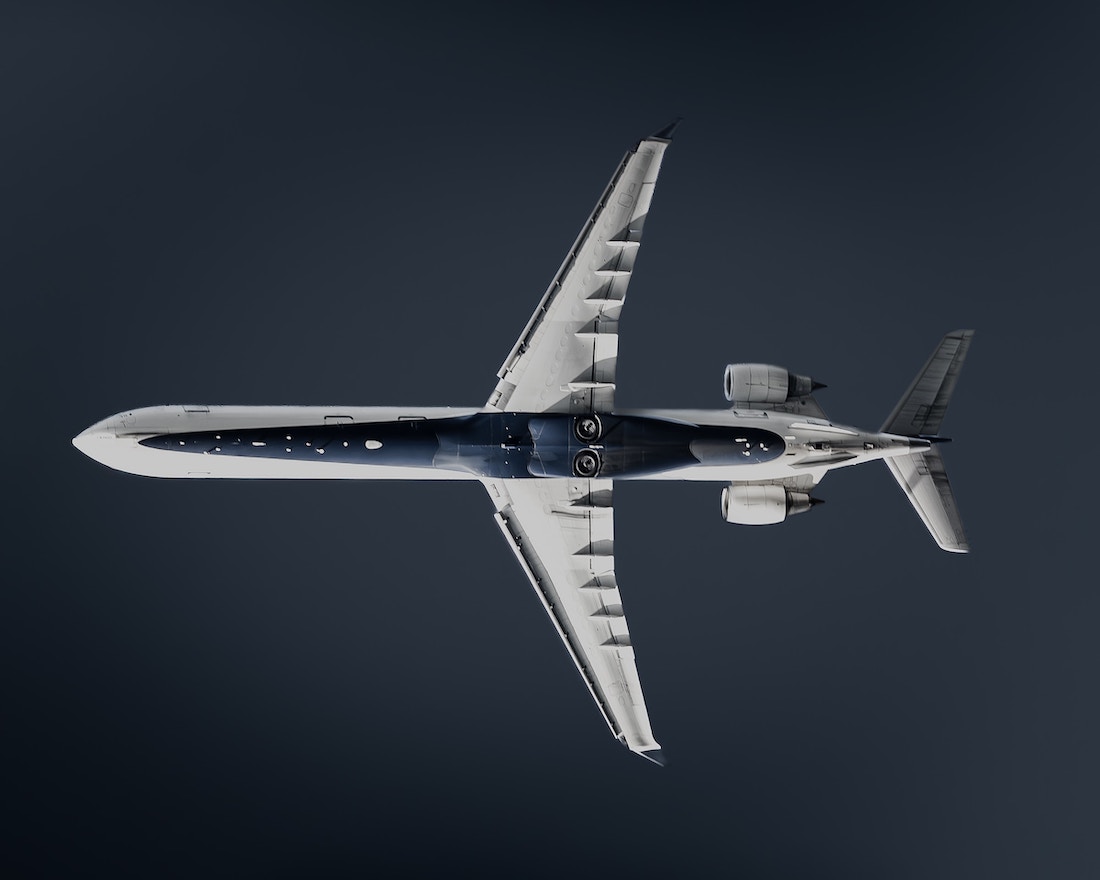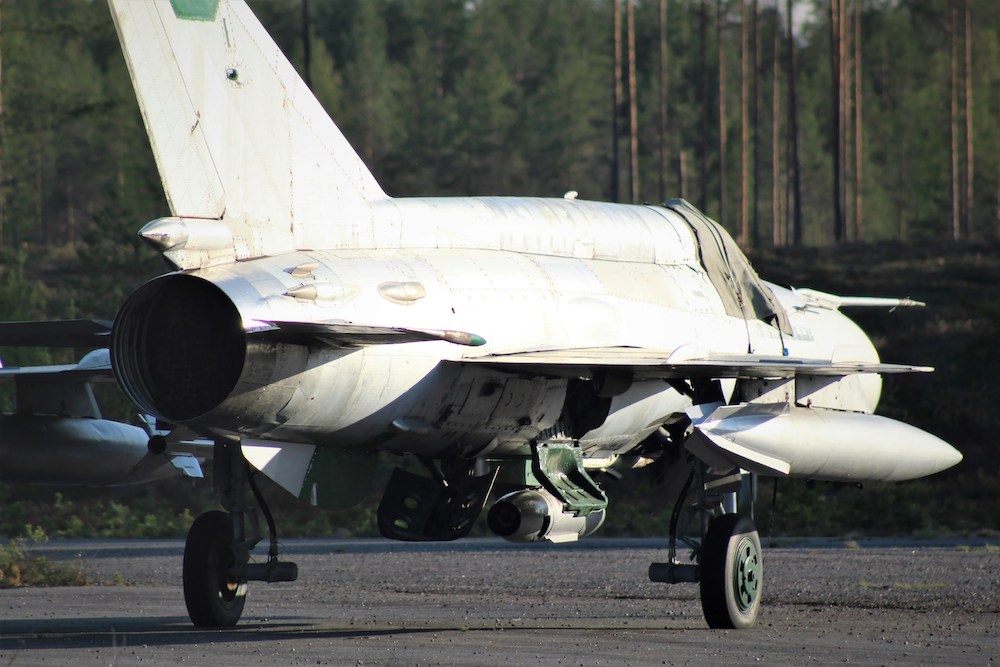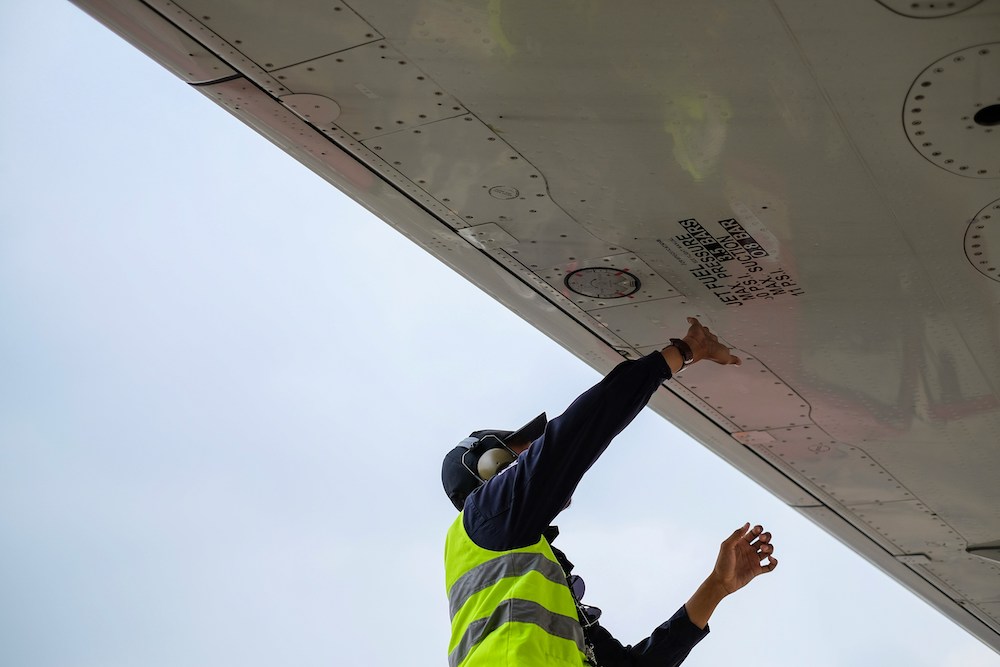
The CRJ900 is one aircraft series that showcases cutting-edge engineering and smart design, and played a role in revolutionizing regional air travel by setting new performance and comfort standards.
As an extended version of the CRJ700, the CRJ900 was designed to accommodate more passengers without sacrificing efficiency. Since its introduction in 1999 and official launch in 2001, it has effectively met the increasing demands of regional air traffic.
CRJ900 Technical Specifications
- Size and Weight: The CRJ900 is 118 feet 11 inches long, 24 feet 7 inches tall, and has a wingspan of 81 feet 7 inches. With these specifications, it can handle a maximum takeoff weight of 84,500.
- Capacity: This aircraft is well-suited for regional airlines, as it accommodates 76-90 passengers, the specific number depending on the chosen configuration
- Cabin Features: The cabin, stretches 69 feet 4 inches in length, 8 feet 4 inches in width, and 6 feet 2 inches in height.
CRJ900 Engine Type
The heart and pulse behind the CRJ900’s performance are its two General Electric CF34-8C5 turbofan engines. GE designed the engine to simultaneously maximize both thrust and fuel efficiency without increasing the number of components that could increase maintenance needs and potential failures. Such advancements help CRJ900 planes stay current with today’s exciting engine innovations and the aviation industry’s focus on sustainability. To learn more about CF34-8C engines, click here.
Design and Technical Aspects
- Engine Type: As a high-bypass turbofan engine, the CF34-8C5 sufficiently meets the operational demands of a regional jet. This engine type is specifically designed to provide substantial thrust and fuel efficiency.
- Technical Specifications: Each of the CRJ900’s two engines generates an impressive thrust of 13,360 pounds force. This thrust enables the aircraft to reach a service ceiling of 41,000 feet. It also enables it to maintain a high-speed cruise at 0.82 Mach. Its 1.32 meters diameter, the engine also incorporates a 14-stage axial compressor. This is a pivotal component that contributes to its overall efficient performance.
Performance and Efficiency
- Fuel Efficiency: The CF34-8C5’s remarkable fuel efficiency is one of its features thanks to the lightweight materials used. The fuel efficiency was also achieved through advanced aerodynamics in both the fan and compressor stages.
- Power and Reliability: The CRJ900’s engine combines power and reliability, enabling smooth operation in various conditions without sacrificing performance. This reliability is especially important for regional airlines, where quick turnaround times and operational efficiency are key.
Maintenance and Operational Aspects
- Ease of Maintenance: The CF34-8C5 is purposefully designed for easy maintenance, a crucial element in reducing operational costs. Its modular design facilitates swift part replacements, effectively minimizing downtime and ensuring efficient operations.
- Lifecycle and Durability: Emphasizing longevity, these engines boast a design that extends their service life. This significantly contributes to the overall low lifecycle costs of the CRJ900.
Comparison with Competing Engines
- Competitive Edge: The CF34-8C5 has a slight advantage in thrust compared to the engines in rival aircraft like the Embraer 175. The enhanced thrust contributes to its faster top speed and enhanced climb performance.
- Market Reception: The CRJ900 has been widely adopted by regional airlines globally, thanks to its excellent engine performance and reliability. This positive market further solidifies its status as one of the most preferred choices among industry players.
- Emissions and Noise Reduction: The CF34-8C5 engine is known for its environmental friendliness with lower emissions. It also functions with an incredibly reduced noise level. This combination of lower noise levels and emissions aligns with the aviation industry’s goal of achieving a more eco-friendly and sustainable operation.
CRJ900 Performance and Flight Characteristics
- Top Speed and Range: The CRJ900 has a maximum speed of 0.82 Mach, around 541 mph (871 km/h). With this speed, it is one of the CRJ900 fastest in its class. Its impressive 1,553 nautical miles (2,876 km) range also allows it to travel efficiently regionally without frequent stops.
- Service Ceiling: The CRJ900 can also reach a service ceiling of 41,000 feet. This feature helps the aircraft to fly above most weather disturbances and select more efficient routes.
Safety Features and Stall Prevention
- Advanced Avionics: The CRJ900’s state-of-the-art avionics suite comes from Rockwell Collins to enhance overall flight safety by improving its navigation accuracy. Click here to learn more about Rockwell Collins technology.
- Stall Prevention Mechanisms: Including stick shakers and pushers is another crucial safety feature. Due to the T-tail configuration of the aircraft, it is quite susceptible to deep stalls. However, these features are specifically designed to prevent stalls. They serve as safety systems that alert pilots and initiate automatic recovery actions when needed.
- Engine Reliability: In the rare event of a deep stall, the General Electric CF34-8C5 engine of the CRJ900 plays a significant role in safety. The engines provide enough thrust to help the aircraft recover, ensuring an additional layer of safety.
Variants and Configurations
- Triple Class Configuration: This variant offers the ultimate in passenger comfort, featuring a three-class layout with business, premium economy, and economy sections. It typically accommodates fewer passengers but with enhanced comfort, especially in the business class section.
- Dual-Class Configuration: A popular choice for many regional airlines, this configuration balances comfort and capacity. It includes business class and economy class, offering a premium experience for business travelers while efficiently serving economy passengers.
- Single Class Configuration: Maximizing capacity, this variant is designed with only an economy class, allowing airlines to transport the maximum number of passengers, typically up to 90, depending on the seating arrangement.
- Seating Layout Options: The flexibility in seating arrangements allows airlines to customize the cabin according to their operational needs and market demands, making the CRJ900 a highly adaptable aircraft.
CRJ900 Operational Costs and Economics
- Fixed Costs: The fixed costs include insurance, crew training, and parking. Remember that these expenses remain constant even if an aircraft is not in use. Moreover, with the CRJ900’s advanced design and reliability, these fixed costs are still maintained at a competitive rate.
- Variable Costs: An aircraft’s variable costs involve expenses that vary with the aircraft’s usage. Examples include fuel consumption, maintenance, and crew salaries. With the CRJ900, these costs are also reduced, especially due to the aircraft’s fuel-efficient engines.
- Cost-Effectiveness Comparison: When making an overall comparison with a rival aircraft like the Embraer 175, the CRJ900 often emerges as a more cost-effective option. It excels significantly with efficient engine performance and lower operational costs. This makes it a good option for regional airlines.
Key Takeaways About CRJ900 in the Regional Aviation Market
The design and engineering of the CRJ900 testify to Bombardier’s commitment to excellence. This aircraft meets and often exceeds the rigorous demands of regional air travel. Its efficient engines, versatile cabin configurations, and impressive performance metrics demonstrate a deep understanding of what airlines and passengers need in today’s fast-paced world.
The CRJ900 is known for its precision and reliability, especially in an aviation industry where every detail matters. This plane represents the industry’s drive for excellence, innovation, and connectivity. Looking at its role in aviation history, it’s clear that the CRJ900 is not just a part of aviation but a transformational tool for regional air travel. Its efficiency, accessibility, and safety signify a commitment to maintaining high standards in regional aviation.
Want to learn about other aircraft? Check out:
- EMB 170 vs 175- Cruise Speed, Cabin Size & More
- Comparing Airbus A318, A319, A320 & A321 Variants
- Cessna 182 vs. 172 – Cruise Speed, Cabin Size & More
Written by Michael Olusoji
Michael Olusoji is a distinguished aviation writer with over five years of in-depth expertise.
His comprehensive research and analytical prowess have culminated in a myriad of articles that dissect the intricate facets of the aviation sector, particularly the engineering nuances of aircraft components.



